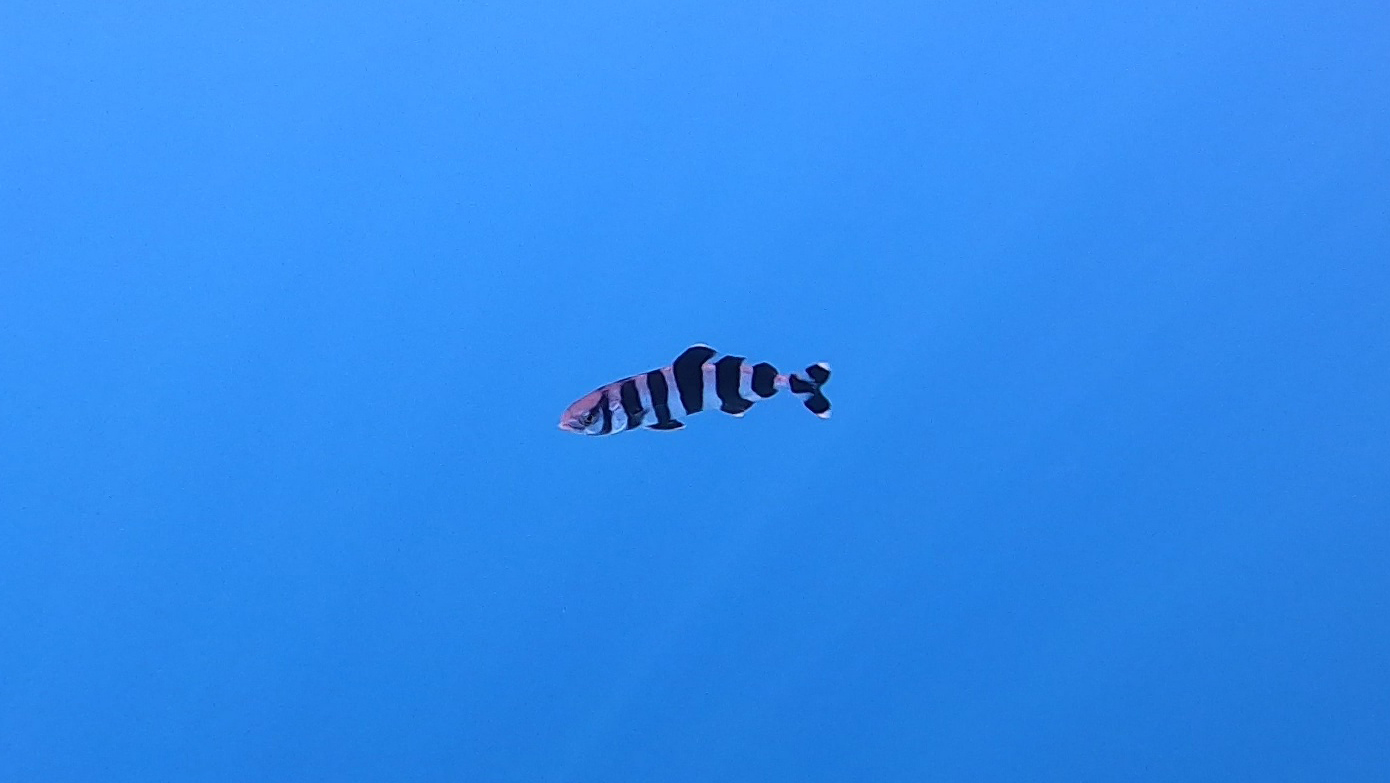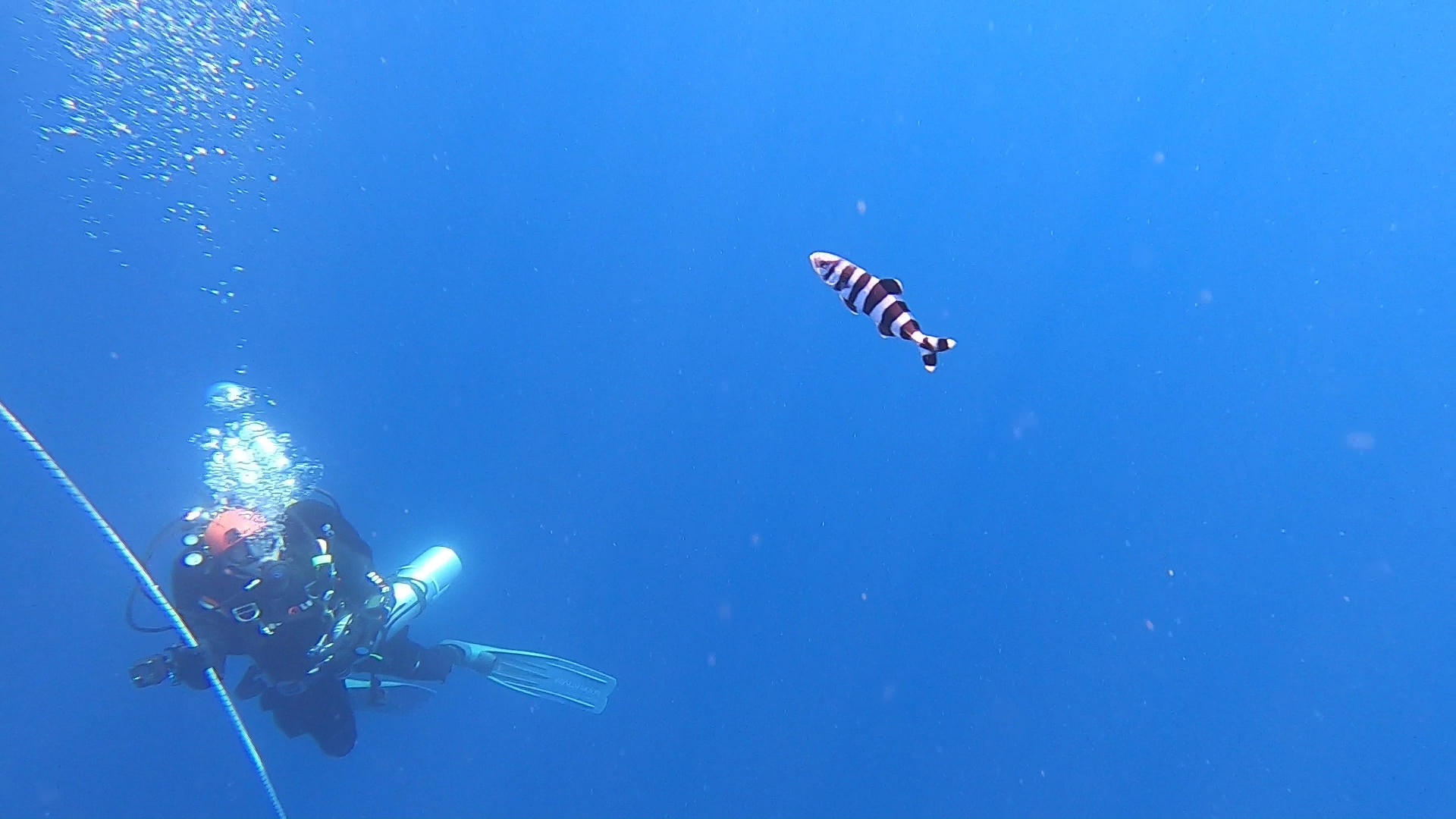Pesce Pilota - Naucrates ductor
The pilot fish congregates around sharks, rays, and sea turtles, where it eats ectoparasites on, and leftovers around the host species; younger pilot fish are usually associated with jellyfish and drifting seaweeds. They are also known to follow ships, sometimes for long distances; one was found in County Cork, Ireland, and many pilot fish have been sighted on the shores of England. Their fondness for ships led the ancients to believe that they would navigate a ship to its desired course.

The pilot fish‘s color is between dark blue and blackish-silver, with the belly being lighter in color. The pilot fish is also known to have a temporary variation of color when excited; its dark-colored bars disappear, and its body turns silvery-white, with three broad blue patches on its back. It can be recognized by its five to seven distinctive traverse bands, which are of a much darker color than the rest of the body. The pilot fish can grow up to 60–70 cm in length.
While pilot fish can be seen with all manner of sharks, they prefer accompanying the oceanic whitetip, Carcharhinus longimanus. The pilot fish’s relationship with sharks is a mutualist one; the pilot fish gains protection from predators, while the shark gains freedom from parasites. It was often said by sailors that sharks and pilot fish share something like a “close companionship”; there were even tales of this fish following ships which had captured “their” shark for up to six weeks and showing signs of distress in its absence.

Naucrates ductor, commonly known as Pilot fish, is a saltwater fish belonging to the Carangidae family, the only exponent of the genus Naucrates.
Distribution and habitat This species is widespread in the coastal waters of temperate and tropical seas around the globe, including the Mediterranean Sea.
Description The appearance is typical of the Pelagic Carangidae, in fact the body is elongated, with a rounded head. The fins are strong and muscular and the tail is bilobed. The livery is white-gray with wide black bands. The young have white-yellow livery with fringed brown stripes. It can exceed 50 cm in length.

Coexistence with jellyfish
Young specimens, like those of other species of the family, tend to take shelter in the umbrella of the jellyfish, living with them, taking advantage of the protection they provide and perhaps feeding on the leftovers of their prey.
The adult specimens, on the other hand, usually follow ships, sea turtles, manta rays, rays but above all sharks. The relationship of this fish with sharks is described as almost symbiotic and it is extremely rare that a shark feeds on a pilot fish so much so that we often notice small pilot fish swimming in the mouth of the sharks to feed on the food residues left between the teeth. , parasites, leftover food and even shark droppings, providing a cleaning “service” in return.
Predators
The only species that poses a danger to pilot fish is dolphinfish.
https://it.wikipedia.org/wiki/Naucrates_ductor
https://en.wikipedia.org/wiki/Pilot_fish
https://www.intotheblue.it/2020/07/26/meeting-with-the-pilot-fish-naucrates-ductor/
